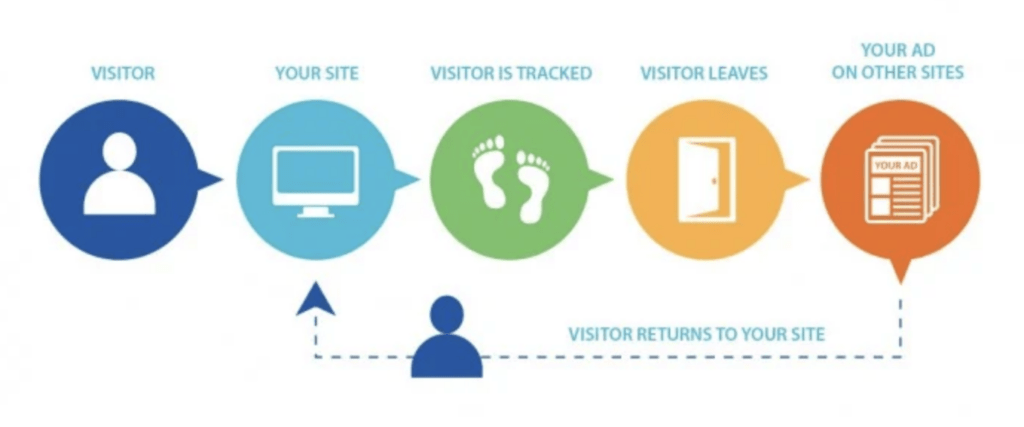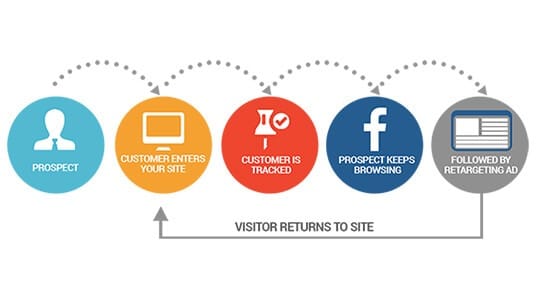How Remarketing Keeps Your Brand Strong in Customers Minds
You finally click the ‘Publish’ button and get excited as your ads are ready to be sent out into the world.
Now, you sit back and the money just rolls in, right?
Well, that depends on your advertising and product offer.
The reality is though, it will take consumers around 8 times of interacting with your brand before they go ahead and buy something from you.
This is where remarketing comes in.
Remarketing is the ultimate tool to stay in a customers mind after they have interacted with you, and push them along the sales funnel to a transaction.
“But how do you track customers?”.
“Where do the ads show?”
“Do people actually click the ads?”
After reading this blog, you will be equipped with the know-how to effectively re-market to your customers and bring more sales to your business.
At Rozee Digital, we personally use facebook remarketing and google ads remarketing in all our campaigns, so we’d like to think we know what we’re talking out.
So without further ado, let’s get into it.
What is remarketing?
To put it simply, remarketing is a way of re-engaging with prospects that have previously engaged with your business but may not have taken the action you want them to.
Let’s say you are in the market for a new TV.
You search Google and find the perfect website, filled with every TV you could possibly imagine.
After browsing through many TV’s, you find the ideal one for you.
You look at it for a while, however, you aren’t yet ready to go and make the big purchase.
So, what do you do?
You click off the website with the intention of coming back at a later time.
A few days later you log into Facebook and see an advert for the exact TV you were previously looking at.
Whether you find that creepy or convenient, this re-sparks your interest in the product and you click the ad to view the product again, leading you to eventually make the purchase.
This is remarketing in a nutshell.
From a business perspective, remarketing is a no-brainer but let’s go into further detail as to why it’s so important in today’s consumer landscape.

How does Remarketing work?
When a person visits your website they are normally met with a pop up box saying ‘accept cookies’. While this is a common occurrence, many people don’t actually know what they are agreeing to.
When a person clicks ‘accept cookies’, they have given companies permission to be remarketed to. When someone visits your website, a line of code, from your remarketing platform, drops an anonymous cookie in the user’s browser.
Then when this ‘cookied user’ leaves the website, the cookie tells the ad platform (Google or Facebook) that the user is visiting another website.
This then prompts an ad to be displayed on this other website and leads to ads literally ‘following’ you round the internet.
Why Is Remarketing Important?
If you are familiar with digital marketing lingo, remarketing can be thought of as targeting ‘warm traffic’ (people who have interacted with your business before).
This is much more effective than targeting cold traffic (people who are unaware of your business) because warm traffic is further down in the sales funnel and are more likely to make a purchase.
Remarketing isn’t just limited to sales either. You could remarket people for any type of conversion e.g. signing up for your mailing list, filling out a lead form, following your on social media etc.
The statistics below should highlight to you the importance of remarketing and show you why you should be thinking about implementing it.
According to Adroll, a huge remarketing platform, only 2% of shoppers convert on the first visit to an online store. This means that you need a way of bringing back the other 98% and guiding them further down the sales funnel.
Just think of the potential returns if you could convert even 30% more website traffic than you currently do.
Based on data gathered by “Software Advice”, website visitors who are retargeted with display ads are more likely to convert by a whopping 70%. Not only this but the click through rate of a retargeted ad is said to be 10x higher than the CTR of a typical display ad.
The question you now have to ask yourself is, are you utilising remarketing for your business and if not, why?
Facebook Remarketing
One of the most common and effective ways of remarketing is through Facebook.
Remarketing on Facebook is very similar to Google Ads remarketing, however, there are some key differences.
With Facebook remarketing, the main difference is that instead of advertising on the Google Display Network, your ads show on.. yes you guessed it: Facebook.
Facebook, in the recent years, has become one of the biggest advertising platforms on the internet, rivalling Google.
If you have advertised on Facebook before you will have no doubt come across ‘Custom Audiences.
If not, Custom Audiences are audiences you can build based on who has been on your website, liked your facebook page, abandoned a shopping cart, etc.
You may be wondering, “how on earth can facebook get this information from my website”?
The answer is very simple: Facebook Pixel.
Facebook Pixel is a tracking code that you place on your website to collect data from your users. The tracking code allows you to track conversions, or events, from Facebook ads e.g. visiting a certain page, making a purchase, adding to cart, etc.
You can then use the Facebook Pixel to build remarketing audiences based on the specific actions people have taken on your website.

Google Ads Remarketing
Google is famously known for its colossal advertising capabilities. So, of course, you can expect that Google Ads comes with a deep remarketing system that gives advertisers a plethora of tools to work with.
Unlike Facebook, Google Ads Remarketing appear on the display network and more recently, the search network too.
There are quite a few different options for remarketing on Google, so let’s dive into each of them.
- Standard remarketing – This type of remarketing shows your ads to your past visitors whilst they browse websites or apps on the Display Network.
- Dynamic remarketing – This type of remarketing allow you to get really specific and show ads for specific products or services that people have viewed on your website.
- Remarketing for mobile apps – This form of remarketing will allow you to show ads to users who have used your mobile app or mobile website. They will see these ads whilst they are using mobile apps or mobile websites.
- Remarketing lists for search ads – Also known as RLSA, this type of remarketing allows you to show ads on the search network. You can target visitors based on their past activity and the ads will show as typical google search ads on the search engine.
- Video Remarketing – As the name suggests, video remarketing allows you to serve ads to users that have previously visited your youtube channel or watched your videos. Google will show these ads either on YouTube or on the display network.
- Email list remarketing – Finally, email list remarketing allows you to upload an email list to google ads. Your users will then be shown ads on Google Search, Gmail or YouTube.
Here are a few ways you can target people with google ads remarketing:
- Product page visited
- Via a stage in your check out process
- Based on not visiting a certain page (like a “confirmation” or “thank-you” page)
- Time spent on site
- The number of pages visited
- Demographic targeting
- Geographic targeting
Remarketing Examples
As a PPC agency, Rozee Digital have successfully used Facebook remarketing and Google Ads Remarketing in our campaigns.
Here are some of our favourite examples of remarketing working really well for our clients.

Conclusion:
So, now you have a better understanding of what remarketing is, how it works, why it’s important and the different platforms to do it on.
The one thing to remember from this article is that people don’t always buy from their first visit to a website.
In fact, it’s fairly uncommon.
People get distracted, aren’t convinced, need to do more research, the list goes on.
But, what is most important is that you continue to re-engage with those visitors and keep your brand firmly in their mind.
That way, when they are ready to do business with you, you can nudge them along the sales funnel and give them exactly what they are looking for.
Then you have a happy customer and your business benefits!
If you would like help with remarketing or any other form of PPC, please get in touch with us below!
